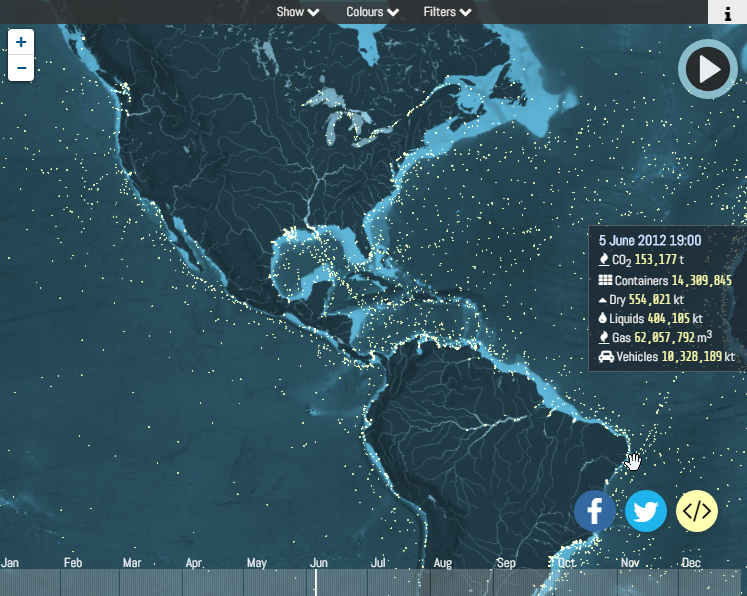Researchers at UCL Energy Institute together with London-based data visualization and digital journalism studio Kiln have released this amazing interactive map that plots 250 million data points to show the movements of the world’s commercial shipping fleet during the year 2012. (Hit the play button above to learn more about what is being displayed)
The map was created based on the methodology developed for the Third IMO GHG Study 2014 and AIS data to estimate emissions from five different ship types; containerships, tankers, dry bulk, gas carriers and vehicle carriers.
Based only on ship movements and without a background map, the world’s coastlines are clearly defined, with plenty of variation in ship activity: from the buzz of activity in the East China Sea to the relative quiet of Somalia’s piracy afflicted waters to ship movements in areas where one might not expect them, such as the Arctic and Antarctic. The map also clearly shows the most crucial shipping thoroughfares of all: the canals linking different bodies of water, such as the Panama Canal, opened a century ago to connect the Atlantic and Pacific Ocean, and the even older and busier Suez Canal which saw 17,000 transits in 2012 alone.
According to UCL Energy, researchers took AIS data showing location and speed of ships and cross-checked it with another database on vessel characteristics, such as engine type and hull measurements. Using this information, they then were able to compute the CO2 emissions for each observed hour, using the approach laid out in the Third IMO Greenhouse Gas Study 2014. Kiln took the resulting dataset and visualized it with WebGL on top of a specially created base map, which shows bathymetry (ocean depth) as well as continents and major rivers.
For each ship type as well as for the entire global fleet, the map displays the freight carried and CO2 emitted by the ships. Emissions from international shipping for 2012 were estimated to be 796 million tonnes CO2 which is more than the whole of the UK, Canada or Brazil emit in a year. This number can be further broken down into 2.18 million tonnes CO2 per day or 90,868 tonnes CO2 per hour.
To find out more about the interactive map and explore the movements of the global fleet, check out www.shipmap.org.
